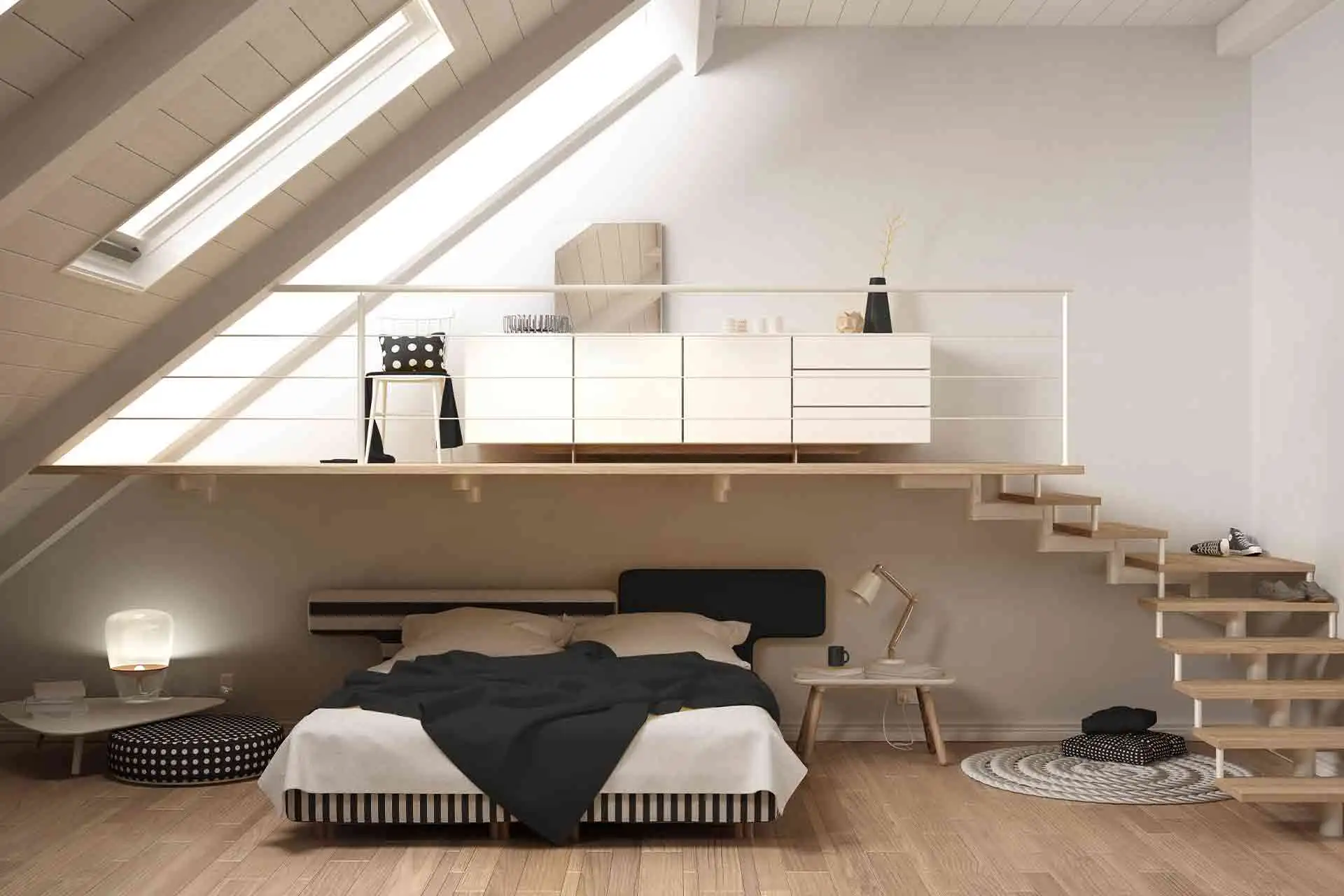Imagine transforming your home with an awe-inspiring mezzanine floor! This DIY guide will walk you through building your own loft space, a sanctuary of both function and flair. From meticulous planning to expert construction techniques, we’ll equip you with the knowledge to craft a safe and stylish mezzanine that seamlessly enhances your home. Let’s elevate your space to new heights!
DIY Mezzanine Floor: Your Step-by-Step Guide to More Space
Building a mezzanine floor yourself is a fantastic way to unlock extra space without the cost of a full-blown extension. It’s a rewarding project that can transform your home. Before grabbing your toolbox, let’s ensure you have all the bases covered.
1. Plan Like a Pro (It’s Easier Than You Think!)
A solid plan is the foundation of any successful mezzanine project. Before purchasing materials, sketch out the exact location, size, and materials for your mezzanine. Consider:
- Dimensions: How high and wide should your mezzanine be? Factor in headroom for comfortable use.
- Materials: Wood is popular for its affordability and DIY-friendliness.
- Staircase: Determine the location and type of staircase for your mezzanine.
Pro Tip: Once you have your plan, check if you need permits from your local council.
2. Time to Get Your Hands Dirty: Let’s Build!
With a plan in place, it’s time to make your vision a reality!
Step 1: Mark Your Territory
Using your plan, mark the exact positions for your support posts, beams, and the outline of your mezzanine floor. Accuracy is crucial in this step!
Step 2: Strong Foundations are Everything
Install sturdy support posts, ensuring they are perfectly plumb and securely anchored to the existing floor. Attach the beams to the posts, creating the framework for your new floor.
Step 3: Lay Down That Floor
With the framework in place, lay down your chosen flooring material. Plywood is a popular choice for its strength and affordability. Secure it properly to the beams.
Step 4: Safety First, Second, and Always
Install safety railings around the perimeter of your platform, ensuring they are sturdy and meet local building codes. Build a safe and sturdy staircase that also meets all regulations.
3. Keeping it Safe and Sound
Building a mezzanine is only half the journey; using it safely is equally important.
- Weight Limits: Know the load-bearing capacity of your mezzanine and adhere to it strictly.
- Regular Checkups: Regularly inspect your mezzanine for any signs of wear and tear.
- Clear Access: Don’t let clutter block your stairs or fire exits.
4. The Perks of Going DIY
Building your own mezzanine floor comes with rewarding benefits:
- Save Some Cash: DIY is almost always cheaper than hiring a contractor.
- Eco-Friendly Option: Repurpose materials for a greener approach.
- Light and Airy: A mezzanine can improve ventilation and natural light.
5. When in Doubt, Call a Pro!
While building a mezzanine yourself is achievable, don’t hesitate to call in the experts if you’re unsure about any aspect of the project, especially structural calculations or complex designs. A qualified engineer can provide peace of mind and ensure everything is up to code.
What are the Benefits of Building a DIY Mezzanine Floor?
DIY mezzanine floors are a versatile and practical way to unlock hidden potential in your space. Here are some compelling reasons why people are turning to these elevated platforms:
- Maximize Your Space: Mezzanine floors essentially double your floor space without the cost of an extension, providing more room for various activities.
- Customization: You have control over the materials, design, and size of your DIY mezzanine, allowing you to tailor it to your style and needs.
- Clutter Control: The added level provides a dedicated zone for storage, freeing up valuable floor space below.
- Budget-Friendly: Mezzanine floors offer a cost-effective alternative to traditional construction methods.
- Enhanced Workflow: Mezzanines can create separate zones for different activities, improving workflow and productivity.
- Visual Appeal: Mezzanines add a touch of architectural interest and visual flair to any space.
- Sustainability: By using fewer materials than traditional construction, mezzanines minimize environmental impact.
- Increased Property Value: A well-designed mezzanine can increase your property value by adding valuable square footage and functionality.
Safety Reminder: Prioritize safety by working with a qualified professional to ensure your mezzanine meets building codes and load-bearing requirements.
Planning Your Dream Mezzanine: Floor Plans, Designs, and Building Codes
Adding a mezzanine to your home requires careful planning to ensure it’s safe, stylish, and compliant with regulations.
Step 1: Picture Your Perfect Mezzanine
Envision your ideal mezzanine: What will its purpose be? How big does it need to be? Where will it be located? How will you access it? Sketch a rough floor plan outlining the layout, dimensions, and any desired features.
Step 2: Choosing the Right Look and Feel
Consider the materials and design elements that complement your home’s style. Open railings create a modern, airy feel, while traditional wood beams add warmth.
Step 3: Safety First, Second, and Always
Consult with a structural engineer to ensure your mezzanine’s design meets safety standards and building codes. They will calculate load-bearing capacity, ensure secure connections, and recommend fall protection measures.
Step 4: Making the Most of Your Vertical Space
Maximize vertical space with smart design choices. Explore “in-plane” mezzanines (against a wall) or “joist over bearer” mezzanines (supported by beams). Incorporate windows or skylights for natural light.
Step 5: Navigating the World of Building Codes
Before starting construction, obtain all necessary permits and ensure your mezzanine complies with local building codes. This includes installing safety features like sturdy railings, stairs with non-slip surfaces, and marked emergency exits. Regular maintenance and inspections will ensure its longevity and safety.
Essential Tools and Materials for Your DIY Mezzanine Project
Before embarking on your mezzanine construction journey, gather the necessary tools and materials.
Your DIY Mezzanine Toolkit:
- Measuring Tape: Crucial for accurate measurements throughout the project.
- Level: Ensuring everything is level and balanced.
- Saw: A circular saw or miter saw for cutting lumber.
- Drill: For creating holes for fasteners.
Stocking Up: Essential Materials
- Structural Lumber: Sturdy joists, beams, and studs for the mezzanine’s frame.
- Plywood or OSB: Sheet materials for the mezzanine floor.
- Fasteners: Screws, nails, bolts for securing the structure.
- Railings: Essential for safety and fall prevention.
- Staircase: For safe and easy access to the mezzanine.
Building Your Mezzanine: A Step-by-Step Roadmap
- Plan and Design: Determine dimensions, layout, weight capacity, lighting, and access points.
- Acquire Permits: Check with your local building department for any required permits.
- Install Supporting Structures: Securely attach beams and joists to create the mezzanine’s framework.
- Lay Flooring: Install plywood or OSB, ensuring it’s level and securely attached.
- Build and Install Railings: Install railings along the edges for safety.
- Construct Staircase: Build and install a staircase that meets safety regulations.
A Few Words on Safety
- Structural Integrity: Consult a qualified structural engineer for peace of mind, especially for large spaces or heavy loads.
- Materials: Always choose high-quality, durable materials that comply with local building codes.
- Fall Protection: Install sturdy railings of appropriate height to prevent falls.
Taking it All In: Key Takeaways for Your Mezzanine Journey
- Invest in quality tools for accurate measuring, leveling, and cutting.
- Choose strong, durable materials for a long-lasting mezzanine.
- Prioritize safety: obtain necessary permits, consult experts, and incorporate safety measures.
Building your own mezzanine is a fantastic way to add valuable space to your home. By following these tips and approaching the project with careful planning and execution, you’ll be on your way to enjoying your brand new loft space!
Want to know how to incorporate Indian traditional principles in modern houses? Then, click here to learn more about it and check out our home interiors 2023 catalog.
- White On White Kitchen Backsplash: Is It Timeless? - November 20, 2025
- Backsplash Colors for White Cabinets: Find Your Perfect Match - November 19, 2025
- Backsplash Ideas for White Cabinets: Find Your Perfect Style - November 18, 2025










